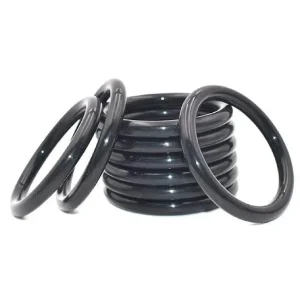Av. Arraona Talleres 11, Nave 5
08210 Barberá del Vallés
Call Us
+34 936 674 203
vargort@vargort.com
Manufacture of O-rings
O-rings are rings with a circular section, used mainly to guarantee fluid tightness.
Technical information
The dimensions of the O-ring (OR) are determined by the inside diameter (d1) and thickness (d2).

Each O-ring is individually inspected for fit and finish before leaving our vulcanizing shop.
Using the right adhesives, presses, molds, vulcanizates at the correct temperature and cure times help vulcanize an O-ring to exceed stated specifications. At Juntas VARGORT we inspect 100% of each production to ensure that standards are met and that the product will work perfectly.
The quality process involves bending the joint slightly while inspecting for burrs, pinholes, and any other nonconformities. As shown in the image below, it is not recommended to excessively bend the O-ring as it is not intended to be bent in your application. Bending the joint creates a cantilever effect, which increases the tensile force on the outer edge of the O-ring, leading to damage to the joint.
O-ring ranges
O-ring by extrusion and vulcanized
O-rings can be manufactured starting from extruded toric thread or cord, joining the ends through a vulcanizing process, thus achieving a strong and durable joint.
This type of O-rings are used for cases of static sealing and in large flanges or container lids.
We can produce vulcanized O-rings in round, square, and custom profiles.
The standard materials we vulcanize include NBR (Nitrile), Viton® (FKM), CR (Neoprene), EPDM, CR/EPDM Blend, Silicone and Fluorosilicone.
The profile or cord can be cut straight or beveled. The bevel cut cuts at a 45º angle, providing more opportunities for contact with the surface area and higher tensile strength.
Molded O-ring
O-rings made from elastomers must meet requirements such as resistance to fluids that require tightness, resistance to temperatures necessary for the purpose, resistance to wear, and adequate hardness under pressure.
Also sufficient resistance to deformation so that it achieves the insulation correctly.
For this reason, the fluid to guarantee the tightness and the working temperature in the application determine the base material. And the pressure determines the required material hardness.
